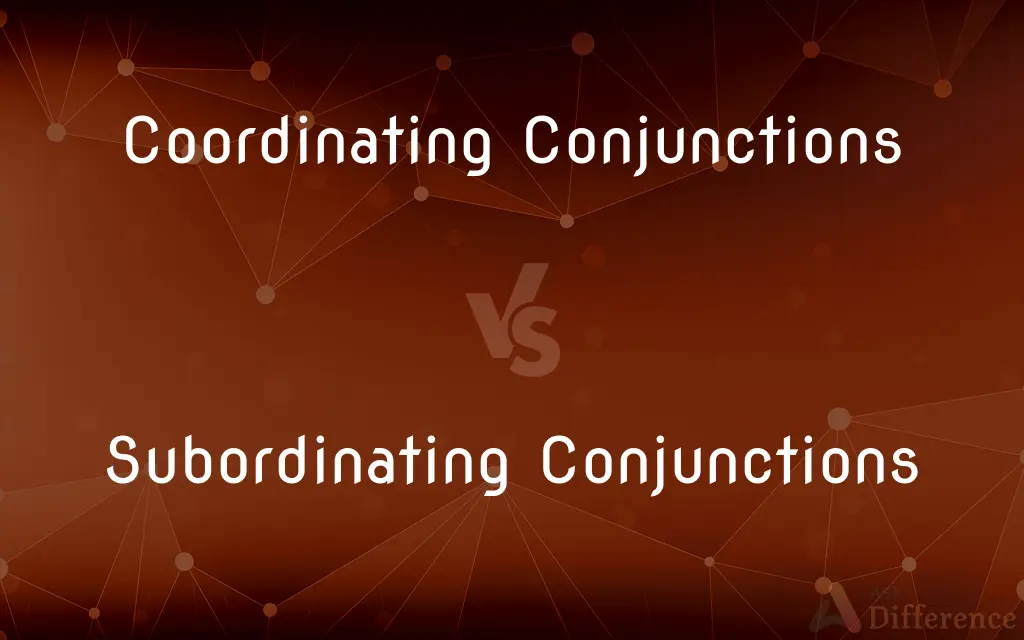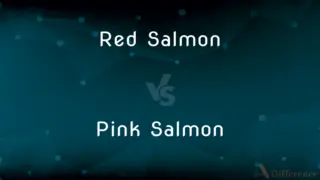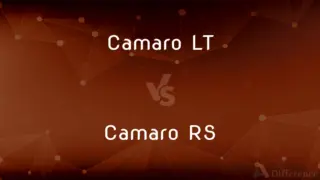Coordinating Conjunctions vs. Subordinating Conjunctions — What's the Difference?
Reviewed by Tayyaba Rehman — By Fiza Rafique — Published on December 17, 2023
Coordinating Conjunctions join equal elements (e.g., words, phrases, clauses); Subordinating Conjunctions connect dependent clauses to main clauses. Both types guide sentence structure.

Difference Between Coordinating Conjunctions and Subordinating Conjunctions
Table of Contents
ADVERTISEMENT
Key Differences
Coordinating Conjunctions and Subordinating Conjunctions serve the crucial role of linking words, phrases, and clauses in English. However, they function differently in sentences, reflecting distinct syntactical relationships.
Coordinating Conjunctions are utilized to join equal grammatical elements. Common examples include "and," "but," "or," "nor," "for," "so," and "yet." When using a coordinating conjunction, you are often connecting words, phrases, or independent clauses of equal importance or emphasis.
On the contrary, Subordinating Conjunctions introduce dependent clauses, which cannot stand alone as complete sentences. These conjunctions, examples being "although," "because," "since," and "unless," establish a relationship between the dependent clause and an independent clause, indicating causality, time, contrast, or other relationships.
In essence, while Coordinating Conjunctions balance elements in a sentence, Subordinating Conjunctions create a hierarchy, making one clause subordinate or dependent on another.
Both Coordinating Conjunctions and Subordinating Conjunctions enhance the complexity and richness of sentence structures, enabling more nuanced expression of ideas and relationships in written and spoken English.
ADVERTISEMENT
Comparison Chart
Function in Sentence
Join equal elements
Connect dependent to independent clauses
Stand-alone Capability
Connects independent clauses
Introduces dependent clauses
Examples
And, but, or, nor, for, so, yet
Although, because, since, unless
Grammatical Hierarchy
No hierarchy (equal emphasis)
Creates hierarchy (unequal emphasis)
Dependency
Both parts can often stand alone
One part is dependent on the other
Compare with Definitions
Coordinating Conjunctions
Words that connect words, phrases, or clauses of equal rank.
She loves pizza, but she doesn't like anchovies.
Subordinating Conjunctions
Words that introduce dependent clauses in a sentence.
She stayed home because it was raining.
Coordinating Conjunctions
Words that offer choices, contrasts, or cumulative effects in sentences.
They traveled by train, for it was faster.
Subordinating Conjunctions
Introduce clauses that can't stand alone as sentences.
Unless you study, you won't pass the test.
Coordinating Conjunctions
Linkers that join two independent clauses or equal grammatical elements.
I wanted to go swimming, yet the weather was too cold.
Subordinating Conjunctions
Connectors that show a relationship between an independent and a dependent clause.
Although he was tired, he finished his work.
Coordinating Conjunctions
Basic conjunctions that establish parallel relationships.
He plays the guitar, and she sings.
Subordinating Conjunctions
Tools that create a hierarchy between clauses.
Since you asked, I'll tell you a story.
Coordinating Conjunctions
Conjunctive tools that reflect balance within a sentence.
You can have tea or coffee.
Subordinating Conjunctions
Elements that indicate causality, time, contrast, or conditional states.
You'll get ice cream if you finish your dinner.
Common Curiosities
Can you list the most common coordinating conjunctions?
Yes, they are for, and, nor, but, or, yet, and so. An easy way to remember them is the acronym FANBOYS.
Is it correct to start a sentence with a coordinating conjunction?
While traditionally discouraged, it's now widely accepted in informal and some formal writing.
What are coordinating conjunctions?
They are words that join two or more words, phrases, or clauses of equal grammatical rank in a sentence.
What are subordinating conjunctions?
They are words that join an independent clause and a dependent clause.
What's the main difference between coordinating and subordinating conjunctions?
Coordinating conjunctions connect words, phrases, or clauses of equal rank, while subordinating conjunctions join an independent clause with a dependent clause.
How can I tell if a conjunction is coordinating or subordinating?
Consider its function: if it joins equally important elements, it's coordinating; if it introduces a dependent clause, it's subordinating.
Do they always come between the items they are connecting?
Yes, coordinating conjunctions typically come between the items they are connecting.
Can a sentence have more than one coordinating conjunction?
Yes, especially in compound-complex sentences or lists.
Do subordinating conjunctions always come at the beginning of the dependent clause?
Typically, yes, but they can occasionally come in the middle of a clause.
Can a sentence have more than one subordinating conjunction?
Yes, especially in complex or compound-complex sentences.
Why is it essential to understand the difference between these conjunctions?
Understanding the difference aids in crafting clear and coherent sentences, ensuring the intended relationship and hierarchy between ideas is conveyed.
Can you provide examples of subordinating conjunctions?
Some examples are although, because, since, unless, and while.
Do subordinating conjunctions change the meaning of the clauses they join?
They can change the relationship between clauses, often adding a sense of time, place, cause, condition, or contrast.
Can a sentence contain both coordinating and subordinating conjunctions?
Yes, especially in compound-complex sentences.
Can these conjunctions be used interchangeably?
No. Their functions are distinct, so they cannot be used interchangeably without changing the meaning or structure of a sentence.
Share Your Discovery

Previous Comparison
Red Salmon vs. Pink Salmon
Next Comparison
Camaro LT vs. Camaro RSAuthor Spotlight
Written by
Fiza RafiqueFiza Rafique is a skilled content writer at AskDifference.com, where she meticulously refines and enhances written pieces. Drawing from her vast editorial expertise, Fiza ensures clarity, accuracy, and precision in every article. Passionate about language, she continually seeks to elevate the quality of content for readers worldwide.
Reviewed by
Tayyaba RehmanTayyaba Rehman is a distinguished writer, currently serving as a primary contributor to askdifference.com. As a researcher in semantics and etymology, Tayyaba's passion for the complexity of languages and their distinctions has found a perfect home on the platform. Tayyaba delves into the intricacies of language, distinguishing between commonly confused words and phrases, thereby providing clarity for readers worldwide.













































